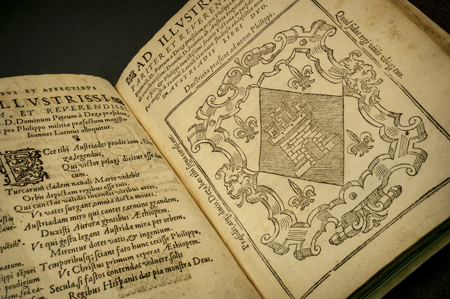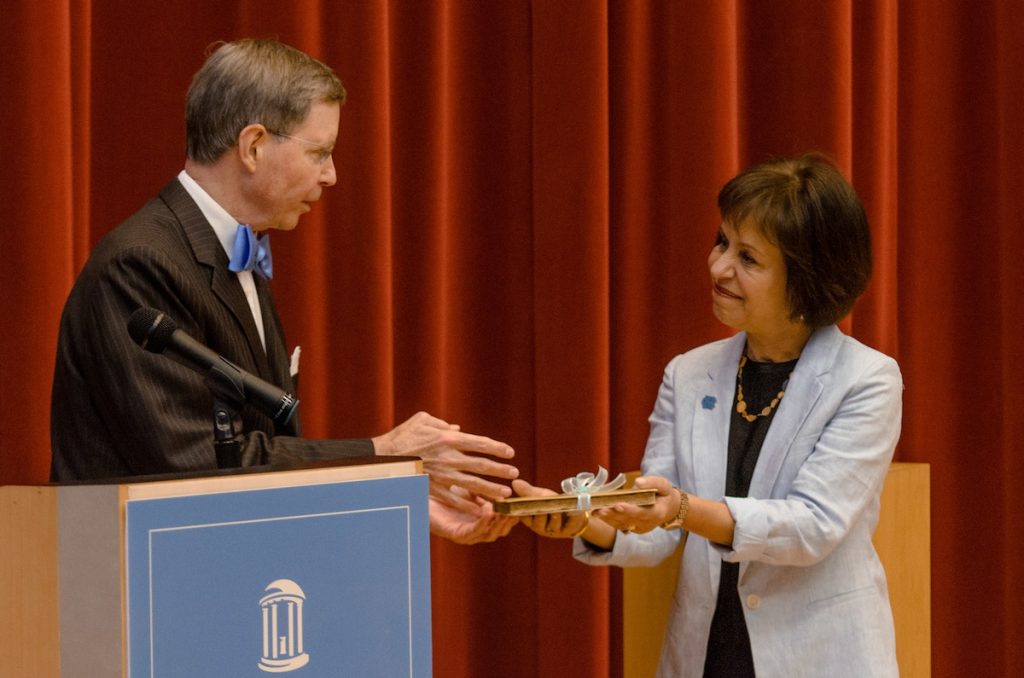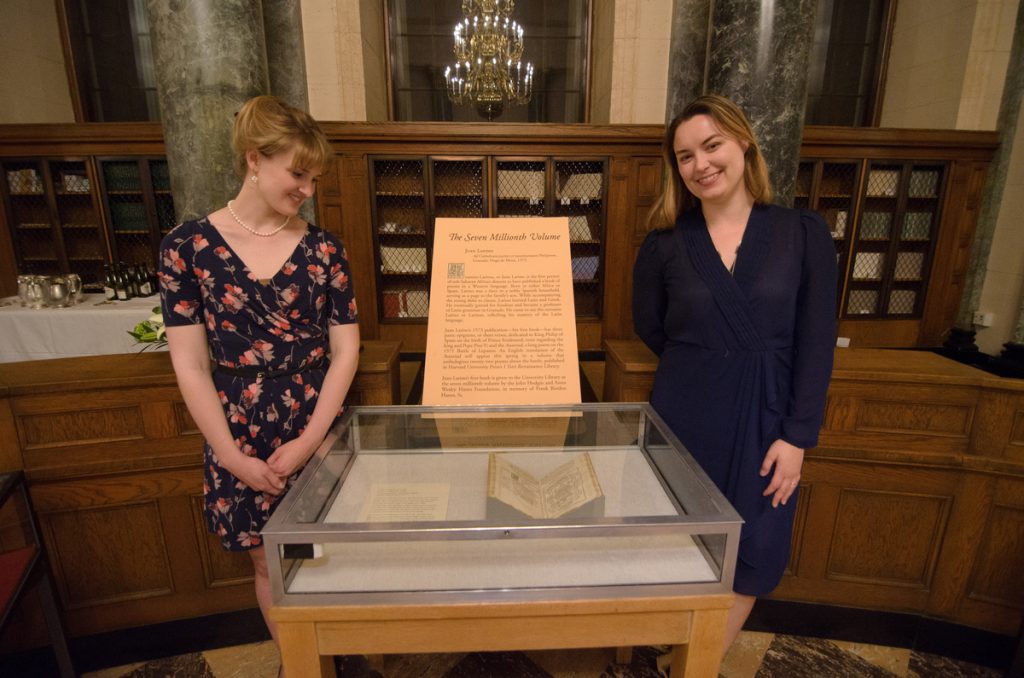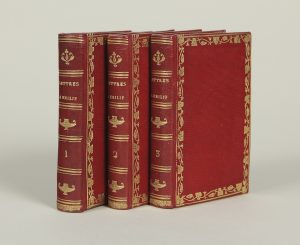
A week ago, on Thursday March 20, some two hundred Library supporters gathered in the FedEx Global Education Center’s Peacock Atrium for a reception and viewing of UNC-Chapel Hill’s seven millionth volume, Juan Latino’s first book, the first book of poetry in a Western language published by an individual of Sub-Saharan African descent.





After much joyous socializing, the crowd moved into the Nelson Mandela Auditorium, where University Librarian Sarah Michalak welcomed the audience and spoke about the significance of Latino’s book for UNC-Chapel Hill. And then Borden Hanes formally presented the volume to Chancellor Carol Folt as the gift of the Hanes Foundation in memory of his father, University benefactor Frank Borden Hanes, Sr.

Following Chancellor Folt’s acceptance on behalf of the University, Curator of Rare Books Claudia Funke had the great pleasure of introducing the evening’s speaker, Professor Michael A. Gómez, who gave a masterful address, “Juan Latino and the Dawn of Modernity.”

The public program concluded with closing remarks from Sarah Michalak and the distribution of a beautifully printed keepsake edition of Professor Gómez’s lecture.



There were further festivities at Wilson Library, where the book will be on public view through April 17 and live thereafter in perpetuity in the Rare Book Collection. Seven is indeed a lucky number!




